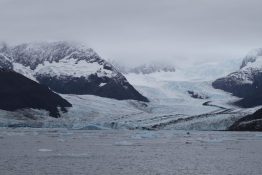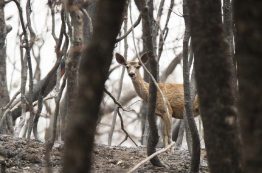A new effort to reconstruct Earth’s climate since the last ice age, about 24,000 years ago, highlights the main drivers of climate change, and how far out of bounds human activity has pushed the climate system. The University of Arizona-led study uses a technique for reconstructing past temperatures developed by co-authors at the University of Washington. The study, published Nov. 10 in Nature, has three main findings: It verifies that the main drivers of climate change since the last ice age are rising greenhouse gas concentrations and the retreat of the ice sheets It suggests a general warming trend over the last 10,000 years — settling a decade-long debate in the paleoclimatology community about whether this period trended warmer or cooler The magnitude and rate of warming over the last 150 years far surpasses the magnitude and rate of changes at any other time over the last 24,000 years “Paleoclimate records provide the only record we have of these past climates, but these records are imperfect and they have gaps in space and time.
Read more at UW News »UW oceanographer will study how glacial particles remove CO2 from atmosphere
An oceanographer at the University of Washington is part of a new project to study how glacial particles, created as glaciers grind the rock beneath them into a powder, react with seawater to remove carbon dioxide from the atmosphere. Alex Gagnon, an associate professor of oceanography at the UW, is one of the investigators on a newly funded project that involves field and lab studies of a natural setting that could help us understand the ocean’s role in carbon removal, which many experts believe will need to be combined with emissions reductions to address climate change.
Read more at UW News »UW petrologist George Bergantz honored with AGU Bowen Award and Lecture
University of Washington Department of Earth and Space Sciences petrologist George Bergantz is one of two 2021 recipients of the Norman L. Bowen Award and Lecture from the American Geophysical Union, a named lectureship which the organization presents annually to one or more mid-career or senior scientists in recognition of outstanding contributions to the fields of volcanology, geochemistry and petrology. The award reflects Bergantz’s innovative scientific contributions on the physics of magmas, hydrothermal systems, metamorphism, and eruption processes.
Read more »How Dungeness crabs’ complex lifecycle will be affected by climate change
New research on the Pacific Northwest portion of the Dungeness crab fishery, which spans the West Coast of the U.S. and Canada, projects how this crustacean will fare under climate change. Results show that by the end of this century, lower-oxygen water will pose the biggest threat. And while these crabs start as tiny, free-floating larvae, it’s the sharp-clawed adults that will be most vulnerable, specifically to lower-oxygen coastal waters in summer.
Read more at UW News »After California’s 3rd-largest wildfire, deer returned home while trees were ‘still smoldering’
When a massive wildfire tears through a landscape, what happens to the animals? While many animals have adapted to live with wildfires of the past — which were smaller, more frequent and kept ecosystems in balance across the West — it’s unclear to scientists how animals are coping with today’s unprecedented megafires. More than a century of fire suppression coupled with climate change has produced wildfires that are now bigger and more severe than before.
Read more at UW News »





